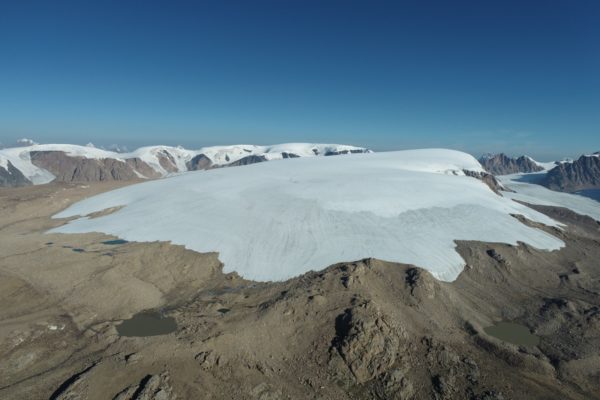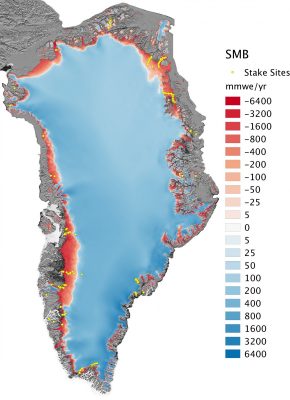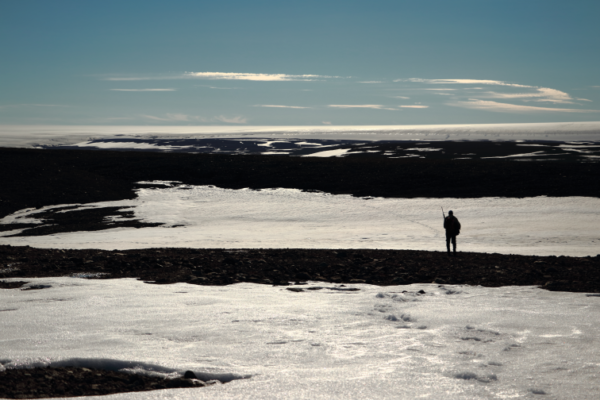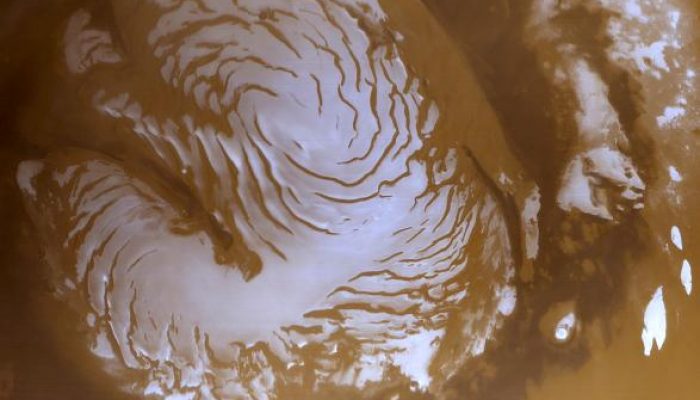We are getting used to perceiving glaciers more and more distant and disconnected from our mountains. With each passing year, it is more difficult to observe them, reach them or climb them. They are becoming an exotic element of the Alpine imagination. When our gaze rests on a mountain glacier, with its crevasses and large moraines, we are filled with the fascination of someone observing a new nat ...[Read More]
Cryo Adventures – Droning on glaciers and ice caps in Kyrgyzstan

Drones are not only a cool toy to play with. They are also a useful instrument to monitor and study glaciers and ice caps. By taking thousands of images flying above the ice, we can make 3D models of ice masses at centimetre resolution. Using drones, we can now survey small to medium sized glaciers and ice caps in unprecedented detail. In recent years, we have conducted several surveys on glaciers ...[Read More]
Image of the Week – Ice caps on Mars?!
Much like our Planet Earth, Mars has polar ice caps too, one for each pole: the Martian North Polar Ice Cap (shown on our image of the week) and the Southern Polar Ice Cap. Yet, their composition and structure reveals these ice caps are quite different from those of Planet Earth… Mars refresher As a refresher, here are some Mars facts: Mars is the 4th planet from the sun. Its equatorial dia ...[Read More]
Image of the Week – A high-resolution picture of Greenland’s surface mass balance

The Greenland ice sheet – the world’s second largest ice mass – stores about one tenth of the Earth’s freshwater. If totally melted, this would rise global sea level by 7.4 m, affecting low-lying regions worldwide. Since the 1990s, the warmer atmosphere and ocean have increased the melt at the surface of the Greenland ice sheet, accelerating the ice loss through increased runoff of meltwater and i ...[Read More]
Image of the Week – Icelandic glaciers monitored from space!

Located in the North Atlantic Ocean, just south of the polar circle, Iceland is a highly fascinating land. Covered by some of the largest glaciers in Europe and hosting active volcanoes, geothermal sites and subglacial lakes, it is extremely dynamic in nature and ever changing. With this Image of the Week we will tell you a bit about the changing ice caps of Iceland and how we can monitor them fro ...[Read More]
Image of the Week — Arctic porthole, Arctic portal

No need to be a superhero to momentarily escape your everyday life! For that you, can just rely on the EGU Cryosphere Blog, which cares for taking you on trips to all sorts of remote and cool places (OK, OK we have to admit that some of these places are indisputably cold 🙂). The picture of this week was taken through the porthole of a boat in the middle of Isfjorden, one of the largest fjord in Sv ...[Read More]


